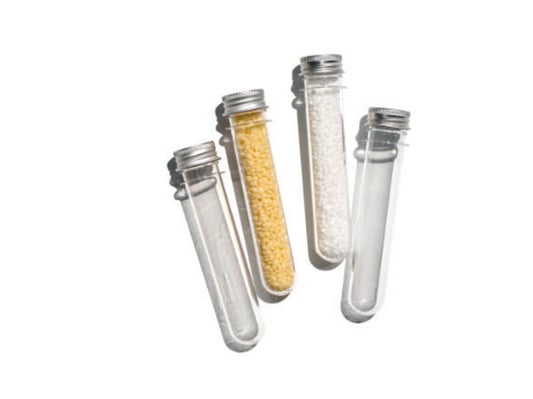Understanding CAS Registry Numbers for Chemical IdentificationIn the realm of commercial chemistry, precision and identification are paramount. Business customers and retailers rely on accurate chemical specifications to source, sell, and utilize compounds effectively. Central to this enterprise is the CAS Registry Number — a unique identifier that stands as a universal marker in the world of commerce and research. In this in-depth exploration, we will unravel the significance and intricacies of CAS numbers, with a focused look at a specific chemical compound, diethyl cyanomethyl phosphonate, and its CAS number. Whether you're new to CAS numbers or seek a deeper understanding, this article is your guide to unlocking the potential of precise chemical identification.Chemical Identity at Your FingertipsCAS numbers, which stand for Chemical Abstracts Service numbers, function as a chemical fingerprint for millions of unique substances. Each SCID (Substance Chemical Identifier) is a unique numeric identifier composed of up to 10 digits, which embodies comprehensive information about the arrant name, molecular composition, and other critical data.The Purpose and Power of CAS NumbersAt the heart of the CAS system is the mission to provide a means to universally identify and categorize chemical substances. This uniform identification is more than a mere convenience; it is essential for:Legal and Regulatory ComplianceSafety Databases and ManagementEfficient Product ProcurementIntellectual Property RightsOccupational Health and SafetyStreamlined Data Management for ResearchersThe Anatomy of a CAS NumberA CAS number is structured into three parts, separated by hyphens:The first part (up to six digits) typically represents a sequentially assigned identification number.The second part (usually consisting of two digits) communicates the number of non-hydrogen atoms in the molecular formula.The third part (one digit) serves as a check digit to validate the CAS number's integrity.Diethyl Cyanomethyl Phosphonate and Its CAS NumberDiethyl cyanomethyl phosphonate, a compound of considerable interest in the chemistry world, boasts a CAS number that serves as its unique signature. This compound's role in organic synthesis and potential industrial applications makes an understanding of its CAS number particularly important for those in the chemical business.What is Diethyl Cyanomethyl Phosphonate?Diethyl cyanomethyl phosphonate is an organophosphorus compound with the molecular formula C6H12NO3P. It is an ester of phosphonic acid and features a cyanomethyl functional group, offering versatile properties for various applications.The CAS Number of Diethyl Cyanomethyl PhosphonateThe CAS number for diethyl cyanomethyl phosphonate is 2537-48-6. This numerical label unlocks a world of data and references that can be directly linked to this specific compound.Explore More Pharmaceutical Intermediates The Significance of the CAS Number for RetailersFor retailers specializing in chemistry, the possession and dissemination of an accurate CAS number are non-negotiable. This number is a gateway to ensuring clarity in product descriptions and aiding customers in sourcing the precise compounds they require for their endeavors.Get Access to diethyl cyanomethyl phosphonate 2537-48-6 FactoryCas 2537-48-6 in Horner-Wadsworth-Emmons (HWE) ReactionOne of the remarkable applications of diethyl cyanomethyl phosphonate is its utility in the Horner-Wadsworth-Emmons (HWE) reaction, a fundamental method in organic chemistry for the synthesis of alkenes. This reaction is an adaptation of the Wittig reaction, offering greater versatility and yielding Z-alkenes selectively under specific conditions. Understanding the HWE Reaction MechanismThe HWE reaction involves the reaction of a phosphonate anion, derived from compounds like diethyl cyanomethyl phosphonate, with an aldehyde or ketone to produce an alkene. The mechanism proceeds through the formation of a phosphorus ylide (or phosphonate-stabilized carbanion), which then attacks the carbonyl carbon of the aldehyde or ketone. The outcome is a highly desirable double bond formation, with the side products being an alkoxide and a diethyl phosphonate ester, both of which can easily be removed from the reaction mixture.Diethyl cyanomethyl phosphonate's role is critical in facilitating the HWE reaction by acting as an efficient precursor for the generation of the necessary phosphonate anion. Its unique structure allows for the stabilization of the negative charge, making it an invaluable reagent for chemists looking to perform this reaction with high levels of precision and control.The Significance of HWE Reaction in Chemical SynthesisThe HWE reaction, bolstered by reagents like diethyl cyanomethyl phosphonate, is a powerful tool in the arsenal of synthetic chemists. It is extensively used for the construction of carbon-carbon double bonds, a fundamental structural motif in organic chemistry. The reaction's ability to yield products with defined stereochemistry makes it particularly valuable in the synthesis of complex molecules such as pharmaceuticals, agrochemicals, and natural products. Navigating the Utility of CAS NumbersApart from straightforward identification, CAS numbers offer an array of utilities that are indispensable for commerce and research.Streamlining Inventory and ProcurementRetailers and providers use CAS numbers to streamline inventory management and procurement processes. By associating product SKUs and other details with CAS numbers, they can efficiently track their supply chain and ensure the right products are delivered to the right consumers.Fostering Intellectual Property RightsIn the realm of patent law and intellectual property rights, CAS numbers are pivotal in defining and protecting chemical innovations. They serve as concrete evidence in legal disputes, providing a reliable link between a compound and its unique properties.Enhancing Research and DevelopmentFor the scientific community, CAS numbers act as a linchpin for sharing and discovering new knowledge. In databases and publications, these identifiers facilitate cross-referencing and data retrieval, accelerating the pace of scientific inquiry and innovation.FAQ on CAS NumbersCan CAS Numbers Change Over Time?CAS numbers are generally assigned only once to a particular substance and are not subject to change. However, in cases where significant changes occur in the categorization or understanding of a substance, a new CAS number could be issued.Are CAS Numbers Globally Recognized?Yes, CAS numbers are universally recognized and accepted, providing a common language for chemical substances across international borders and within industry standards.How Can I Obtain a CAS Number for My Product?To obtain a CAS number for a new product or compound, one typically submits information about the substance to the Chemical Abstracts Service. This includes its name, molecular formula, and any relevant supporting data.Conclusion: The Indispensability of CAS NumbersThe CAS Registry System and its associated CAS numbers underpin modern chemical commerce and research. For retailers and business customers, understanding the significance of these numbers can streamline operations, enhance safety measures, and ensure that chemical products are used efficiently and responsibly.In the chemical industry, precision and safety go hand in hand. By familiarizing yourself with the CAS number and its role in chemical identification, you're not just keeping up with industry standards — you're solidifying your place in the global chemical marketplace as a trusted provider and partner in innovation.For those in the chemistry business, integrating the CAS number into your operations is more than just a formality; it's a commitment to excellence in service and product delivery. It's about harnessing the power of information to fortify the foundations of the chemicals industry — one CAS number at a time.










